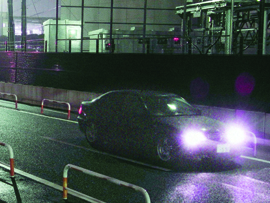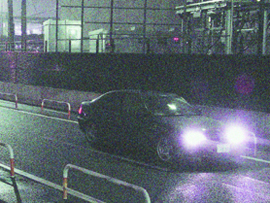Noise reduced through digital noise reduction motion technology significantly enhances the clarity.
Coupled with this is the fact that less than 2 percent of the Transportation Security Administration budget goes toward protecting surface transportation. This puts the burden of safety squarely on local law enforcement and individual transit agencies, which are facing budget cuts of their own.
All of this means that bus operators are increasing their use of technology to enhance security in cost-effective and unobtrusive ways. One of the biggest technology trends we are seeing in bus transportation security is the use of predictive analytics — identifying possible safety hazards and correcting them before an incident occurs.
At their core, predictive analytics are sophisticated software algorithms that create alarms based on “if-then” scenarios. For example, if a security camera captures video of someone dropping a large package into a trash can at a bus station, the system then sends an alert to authorities who can investigate the activity. Or, if a piece of baggage is loaded onto a bus but its owner does not board, it then notifies the police of a suspicious package.
Of course, the algorithms are typically much more complex than this and can operate based on any number of triggers. The complexity of the technology means that all of the data under evaluation by the software needs to be as accurate as possible in order to avoid generating false alarms, or “false positives.” This has been a common problem with analytics to date and is an issue the security industry is constantly striving to improve.
One way that predictive analytics is improving is through better image quality in security cameras. The vast majority of analytics rely on visual data from IP-based security cameras, like their capability to detect motion or identify abandoned packages. The images need to be clear so the software can accurately analyze what is happening in each frame. Imagine the waste of time and money if security guards are dispatched to a bus depot to check a motion detection alert after hours, only to find that an opossum or a tree branch has tripped the alarm.
Unfortunately, this has become a common reality with poor quality images fed into analytics software from security cameras. We have all seen security footage that is too grainy, too dark or washed out to be of any use.
Lighting is the most common cause of poor video quality. Lighting conditions change dramatically throughout the day and even season by season. A camera facing a bus station might have ideal lighting conditions for only a few hours each day. For the rest of the time there are likely to be issues with back lighting, darkness or glare that seriously erode picture quality. In these cases, it can be quite difficult for the analytics software to distinguish between a person and a pesky opossum.
Thankfully, IP camera technologies like those under development by Sony are now addressing these concerns by improving the “wide dynamic range” of IP cameras. Video taken at various shutter speeds combine into a single video stream that makes images more visible even under extremely high-contrast lighting conditions. This improves the quality of the visual data that is fed into the analytics software and reduces the number of false alarms.
Wide dynamic range takes image quality beyond the mega-pixel trend in security cameras. Today, there is a common belief in security cameras that with more megapixels comes better image quality. While that is partly true, increasing the number of megapixels on a camera does nothing to improve how well that camera will perform under a wide variety of lighting conditions. A 10-megapixel picture of a figure that is unidentifiable due to extreme backlighting will do nothing to improve the accuracy of analytics software. On the other hand, a five-megapixel camera with excellent dynamic range can provide much more valuable data.
In addition to improving the dynamic range of IP cameras, reducing the “noise” in low-light or fast-moving video enhances image quality and enables analytics software to be more accurate. In video transmission, noise refers to the level of static or blur in an image. Static often results from images that are poorly lit, while blur is a common problem with fast-moving objects against a still background. When using analytics, this noise often results in false alarms because software algorithms can interpret the pixel changes as motion.
Digital noise reduction technologies such as Sony’s XDNR feature apply filters to video that decrease static or blur. This helps IP security cameras and analytics software distinguish true motion from image noise.
Unfortunately, there are still no standards in the security industry that dictate minimum performance for dynamic range and noise reduction in IP cameras. Prospective users need to conduct thorough research to determine which technology will produce the best image quality for their specific environment and lighting conditions. However, as the technology continues to improve and standards evolve, we expect that the use of predictive analytics in bus transportation systems will only increase.
Links that further explain the importance of wide dynamic range in video surveillance:
Explanation of dynamic range and wide dynamic range technologies
Actual video of backlit figure walking on train platform:
Mark Collett is general manager of Sony Electronics Security Systems Division. He has more than 20 years of security and technology industry experience. Collett is on the Board of Directors for the Security Industry Association (SIA) and he is a frequent speaker at security industry events.


No comments:
Post a Comment